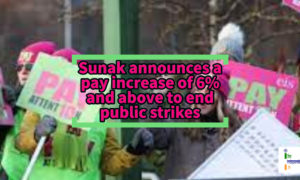
Spikevax is the second vaccine which the EMA has approved for adolescents
The European Medicines Agency (EMA), the medicines regulator of the European Union (E.U.), has
approved Spikevax, a Coronavirus (COVID-19) vaccine formerly known as Moderna, for children aged between 12-17 years.
This is the second vaccine which the EMA has approved for adolescents after Pfizer-BioNTech’s vaccine, which got approved in May 2021. Spikevax will now seek a formal approval from European Commission, the executive arm of the E.U., before the roll-out. It requires 2 doses, 4 weeks apart.
Taking it to twitter, the EMA tweeted,
EMA has just approved the #COVID19vaccine Spikevax, previously known as COVID-19 Vaccine Moderna, for children aged 12 to 17 in the
— EU Medicines Agency (@EMA_News) July 23, 2021.
https://t.co/pnxvNYXDBH pic.twitter.com/WZgUz7G19K
Speaking on the occasion, EMA said, “The overall safety profile of Spikevax determined in adults was confirmed in the adolescent study; the CHMP (Committee for Medicinal Products for Human Use) therefore considered that the benefits of Spikevax in children aged 12 to 17 outweigh the risks.”
A study on more than 3,700 children of 12 to 17 years of age showed that the shot produced a comparable antibody response to that seen in 18- to 25-year-olds. Vaccinating children has been a top priority of the E.U., especially with Delta variant becoming uncontrollable. Spikevax has said that its vaccine is effective and safe for teenagers.
As far as side effects are concerned, EMA said that they are similar to the ones seen in older people. Due to a smaller sample size, the trial could not detect any new uncommon side effects other than the ones that are detected in adults getting the vaccine. These include pain and swelling at the injection site, tiredness, headache, muscle and joint pain, enlarged lymph nodes, chills, nausea, vomiting and fever. These effects are usually mild or moderate and improve within a few days from the vaccination.
Spikevax works by preparing the body to defend itself against COVID-19. It contains a molecule called messenger RNA (mRNA) which has instructions for making the spike protein. This is a protein on the surface of the SARS-CoV-2 virus which the virus needs to enter the body’s cells. When a person is given the vaccine, some of their cells will read the mRNA instructions and temporarily produce the spike protein. The person’s immune system will then recognise this protein as foreign and produce antibodies and activate T cells (white blood cells) to attack it. The mRNA from the vaccine does not stay in the body but is broken down shortly after vaccination.
A statement from Moderna read, “The overall safety profile of Spikevax determined in adults was confirmed in the adolescent study; the CHMP (Committee for Medicinal Products for Human Use) therefore considered that the benefits of Spikevax in children aged 12 to 17 outweigh the risks.”
The Moderna tweeted,
The European Medicines Agency’s Committee for Medicinal Products for Human Use adopted a positive opinion recommending marketing authorization for our COVID-19 vaccine to include adolescents 12 years of age & older. Read more: https://t.co/mTGGMVs0Lm pic.twitter.com/z9XfxjtEmT
— Moderna (@moderna_tx) July 23, 2021
Besides, Spikevax has also sought authorisation in the United States (U.S.) and Canada for use in adolescents. Also, agencies including the World Health Organization (WHO) have urged rich countries to donate their doses to the developing world where fewer than 2% of people have been vaccinated, rather than moving on to inoculate their less vulnerable populations.







